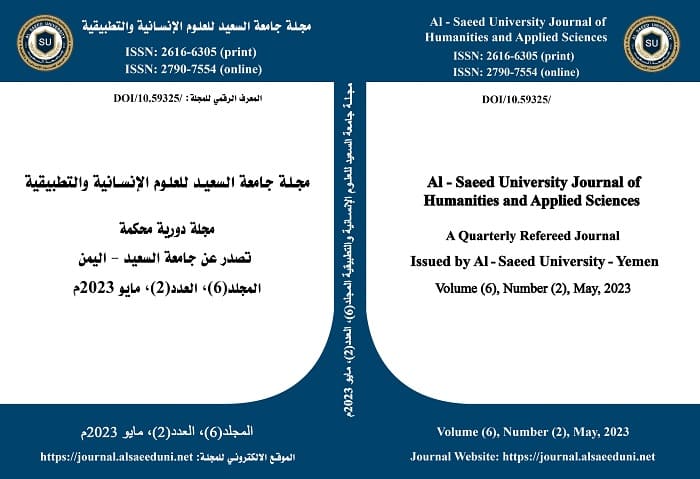Paying complaints and refuting suspicions of collecting the Holy Qur’an
DOI:
https://doi.org/10.59325/sjhas.v6i2.150Keywords:
slander, suspicions, collection of the Holy Quran.Abstract
At its beginning, the research included the importance of collecting the Holy Qur’an and the wisdom of collecting it.
Then I talked about the first of its similarities, which is: the similarity of excess and deficiency:
Where I responded to those who said that in the compilation of the Qur’an there is a deficiency or an addition, as well as the response to those who said, as well as the response to the suspicion that the addition of some words that are not found in the Holy Qur’an have been answered.
How many answers have been given to the suspicions they raised about the writer who wrote this collection? And the response to those who said that the Qur’an was read with desire and desire, and not as it was revealed to the Prophet, may God bless him and grant him peace, and counter their false claims that they raised against the Mother of the Believers, Aisha, may God be pleased with her, that the Prophet, may God bless him and grant him peace, only read the Qur’an as it was revealed to him without addition or omission.
The enemies of Islam were also answered, who claimed that when the Qur’an was compiled, an introduction, alteration, and delay occurred in the chapters of the Holy Qur’an.
The false quasi-Khawarij that they raised against the Companions of the Messenger of God, may God bless him and grant him peace, were answered.
Downloads
Published
How to Cite
Issue
Section
License
copyright is retained by the authors. Articles are licensed under an open access Creative Commons CC BY 4.0 license, meaning that anyone may download and read the paper for free. In addition, the article may be reused and quoted provided that the original published version is cited. These conditions allow for maximum use and exposure of the work.



